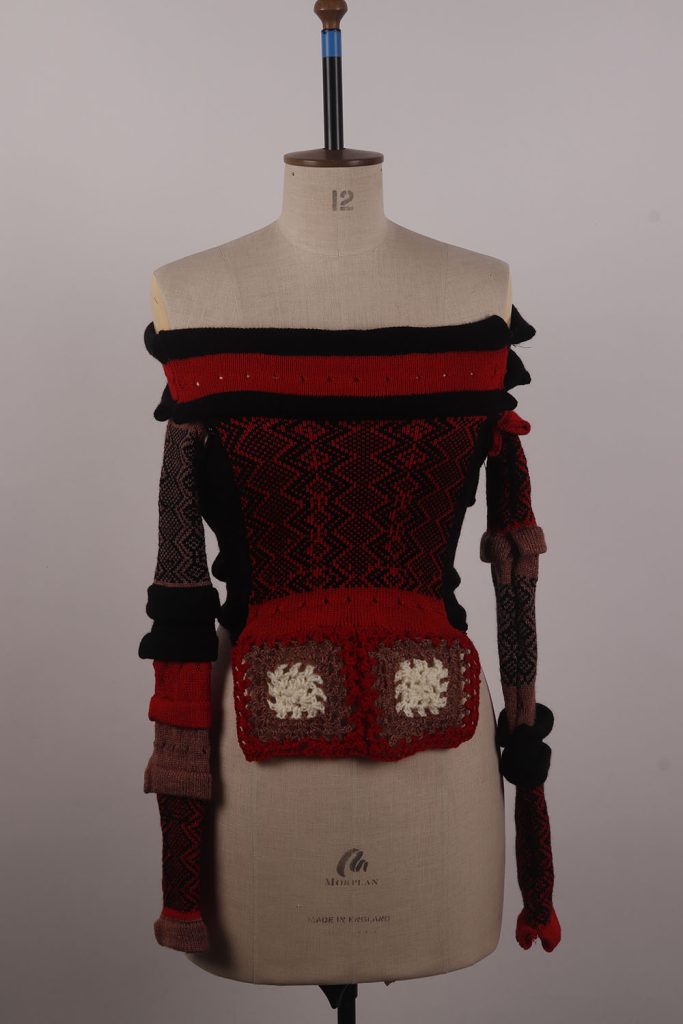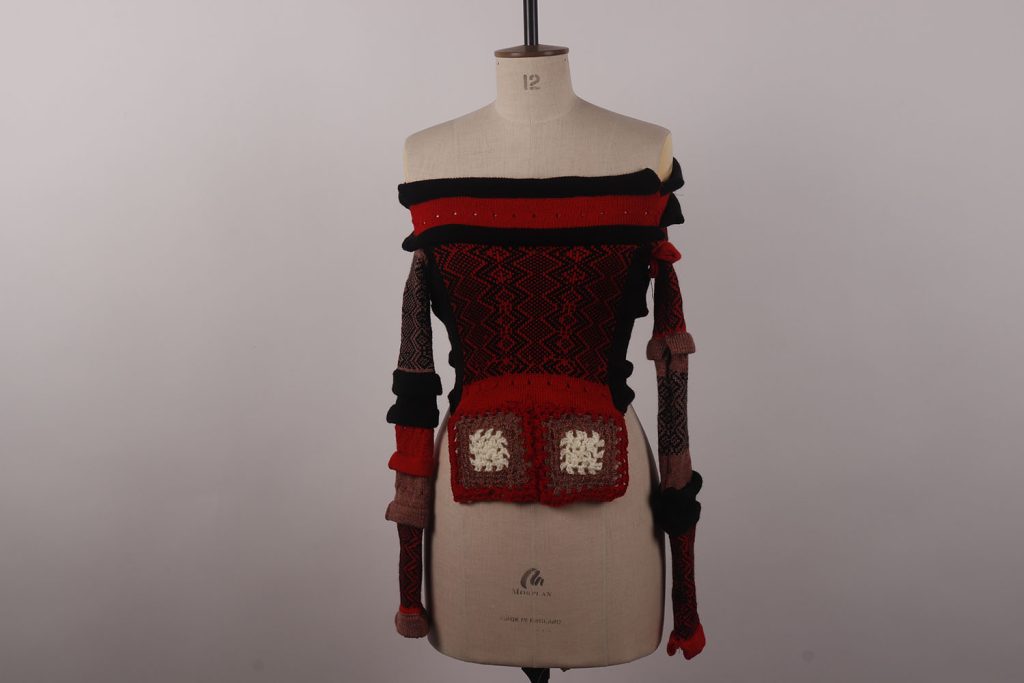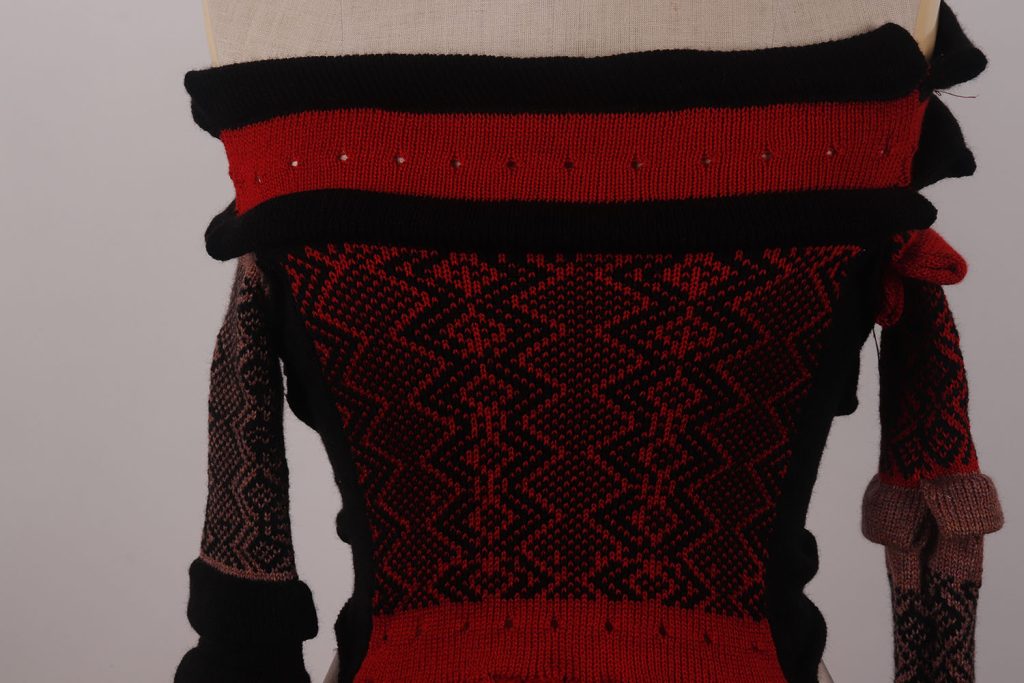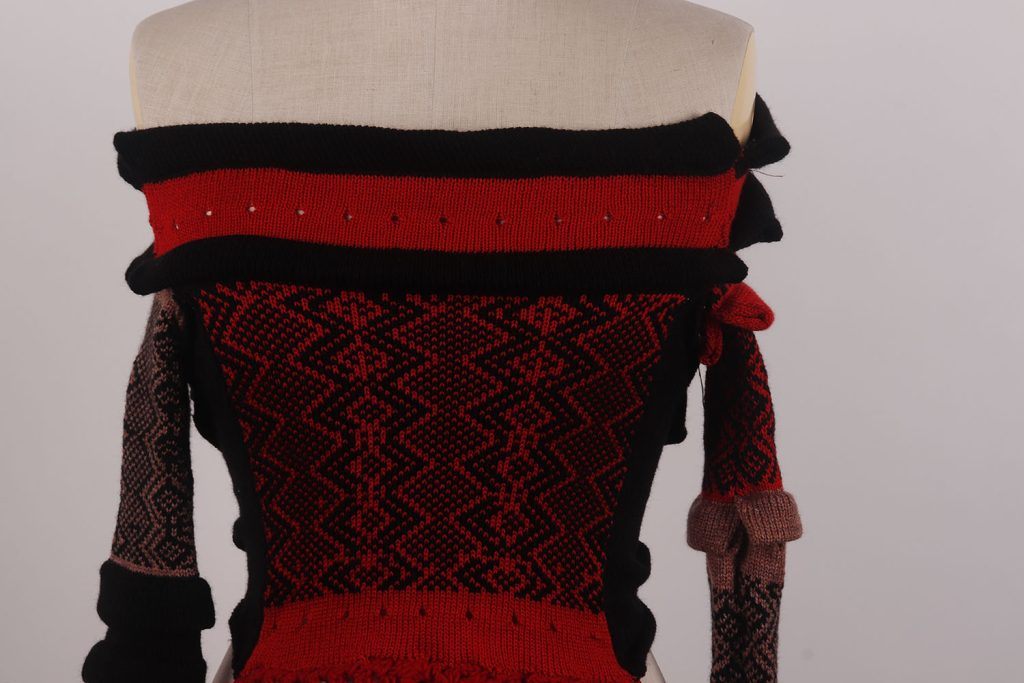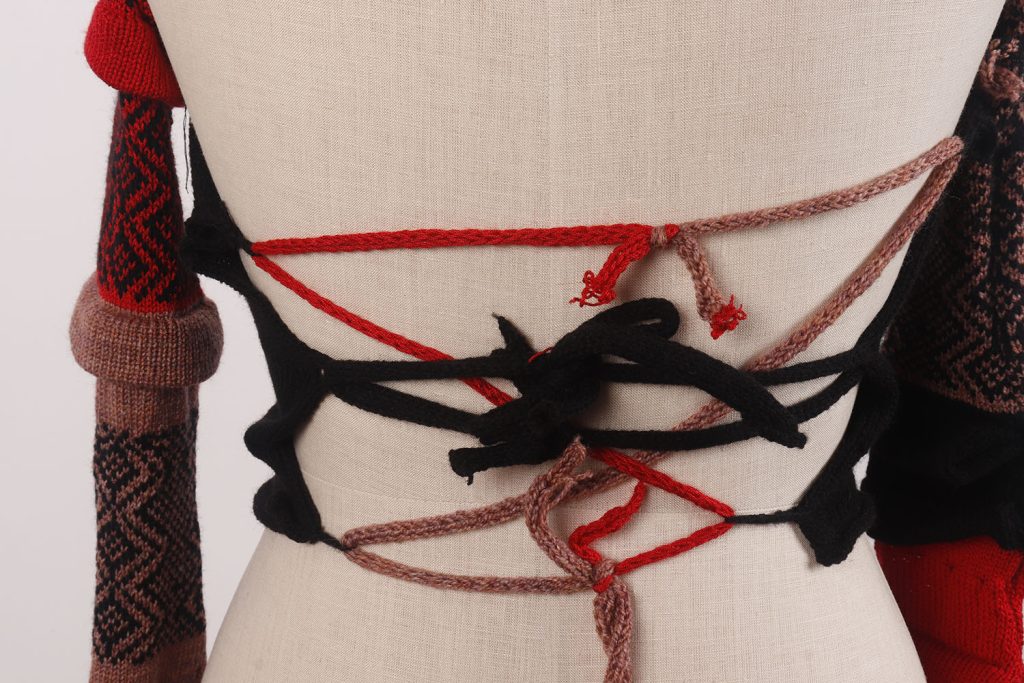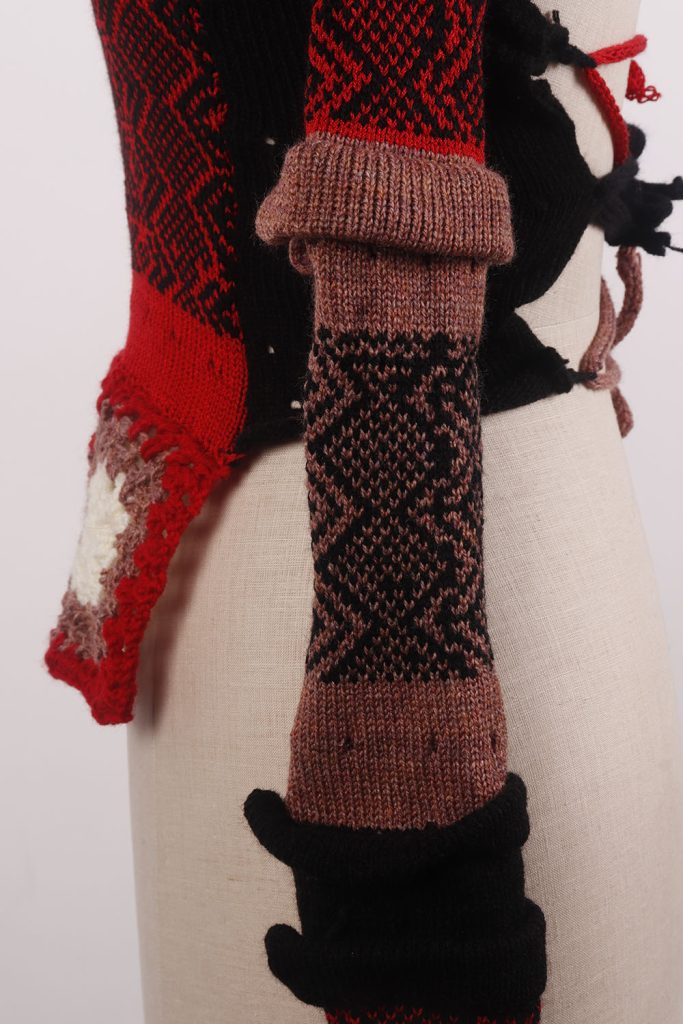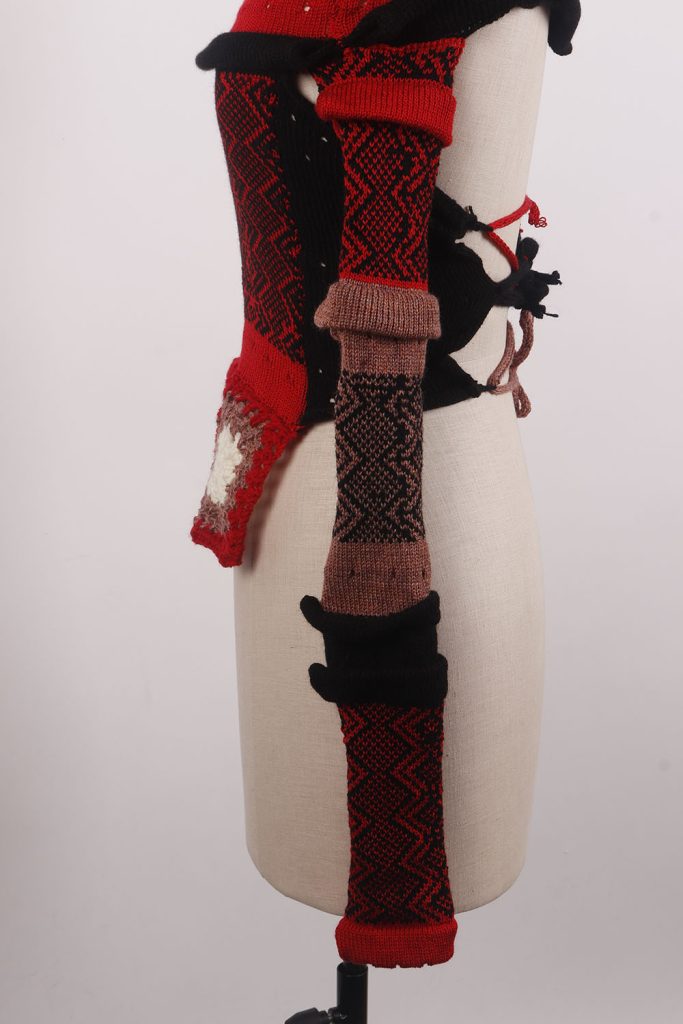A-LEVEL TEXTILE DESIGN 2024
AMII CRESSWELL-STEVENS | ISABELL HIGNELL | OLIVIA HILL | IMAMAH LARAIB | BANITA MANAK | GRACE STEELE | SARAH TAVARES | DAISY WILLIAMS
A-Level textile design encourages students to work with a wide variety of skills and processes across the fields of textiles, fashion and interiors. This includes printed textiles, constructed textiles, embroidery, fashion construction, weaving and fabric manipulation. Learners are introduced to different techniques which they are then able to develop into personal final work. This can be clearly seen within the variety of imaginative outcomes produced this year.
Learners are encouraged to explore both historical and contemporary techniques and processes and to support their work with research into a range of suitable artists, designers, and trends. They are prepared for industry or Higher Education and all the learners from this year are continuing by pursuing degrees, employment or progressing onto the art foundation diploma course here at Dudley College.
I hope that you find the work inspiring. I am very proud of what the learners have achieved this year.
Clare Buchanan, A level Textile Design Tutor
Amii Cresswell-Stevens
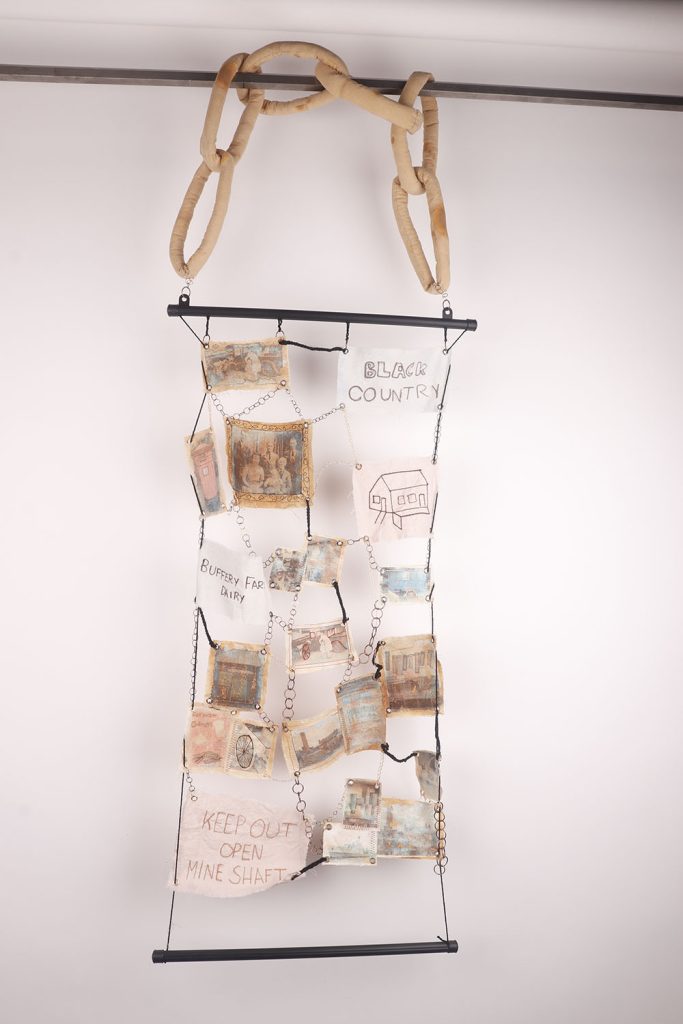
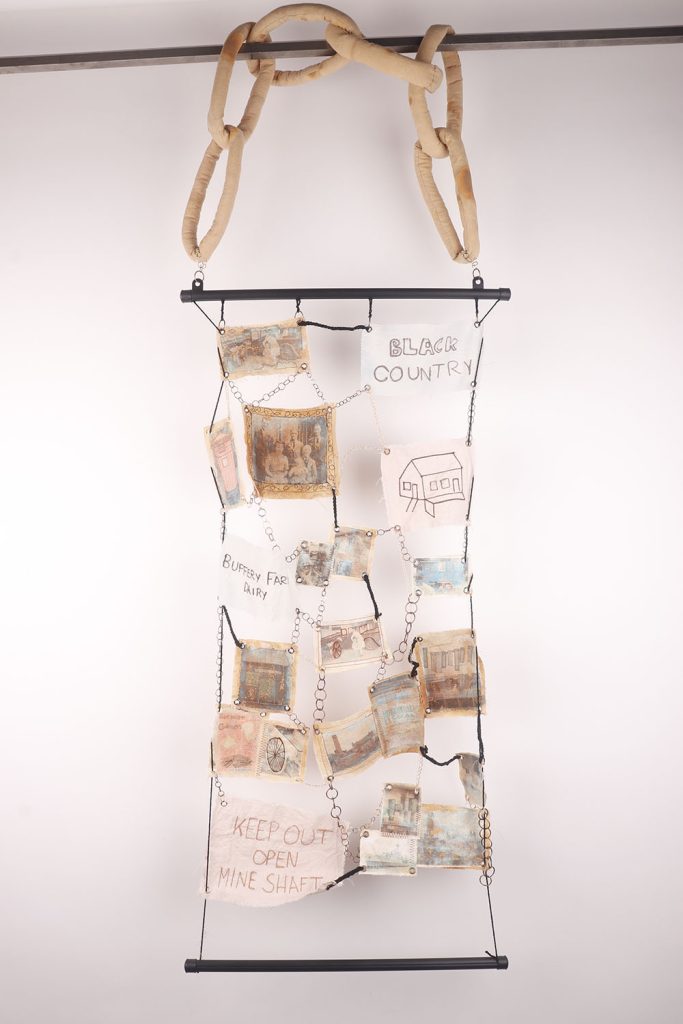

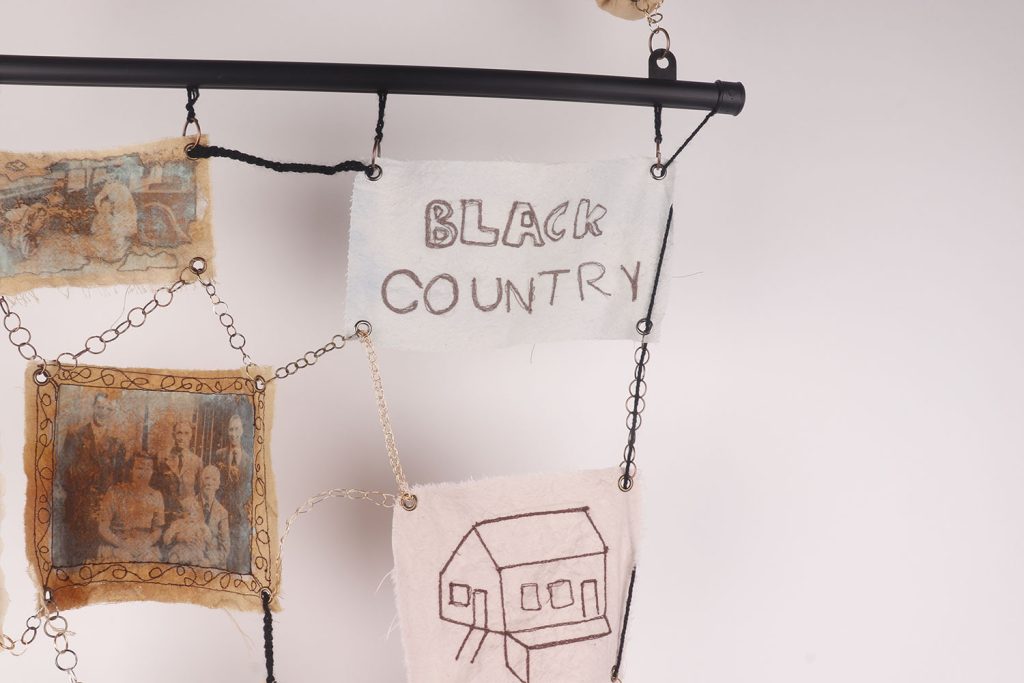


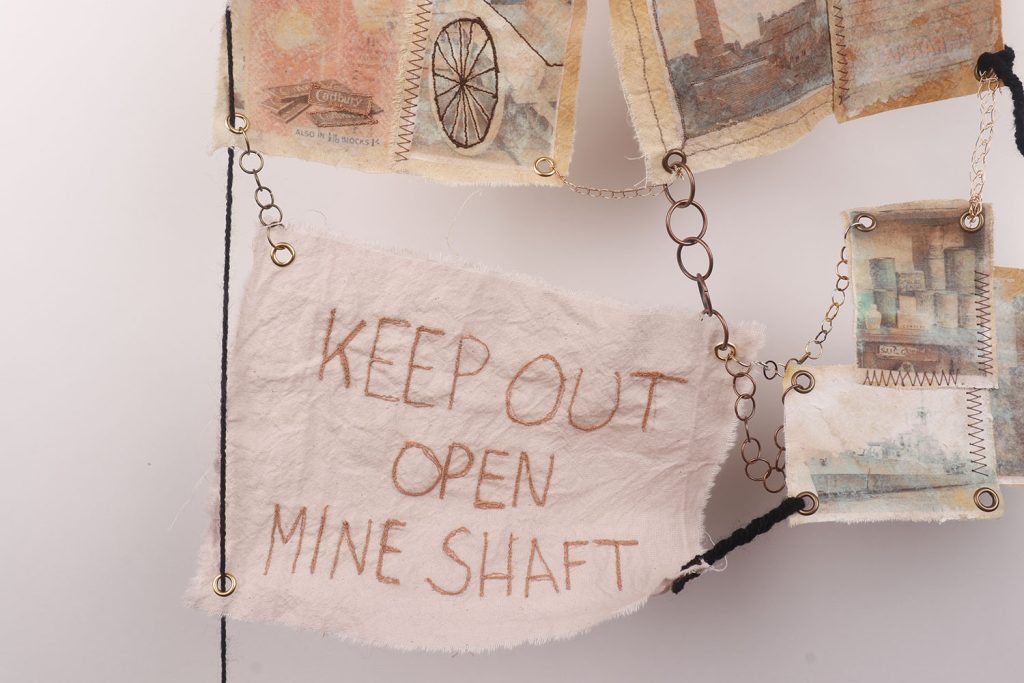



Isabell Hignell





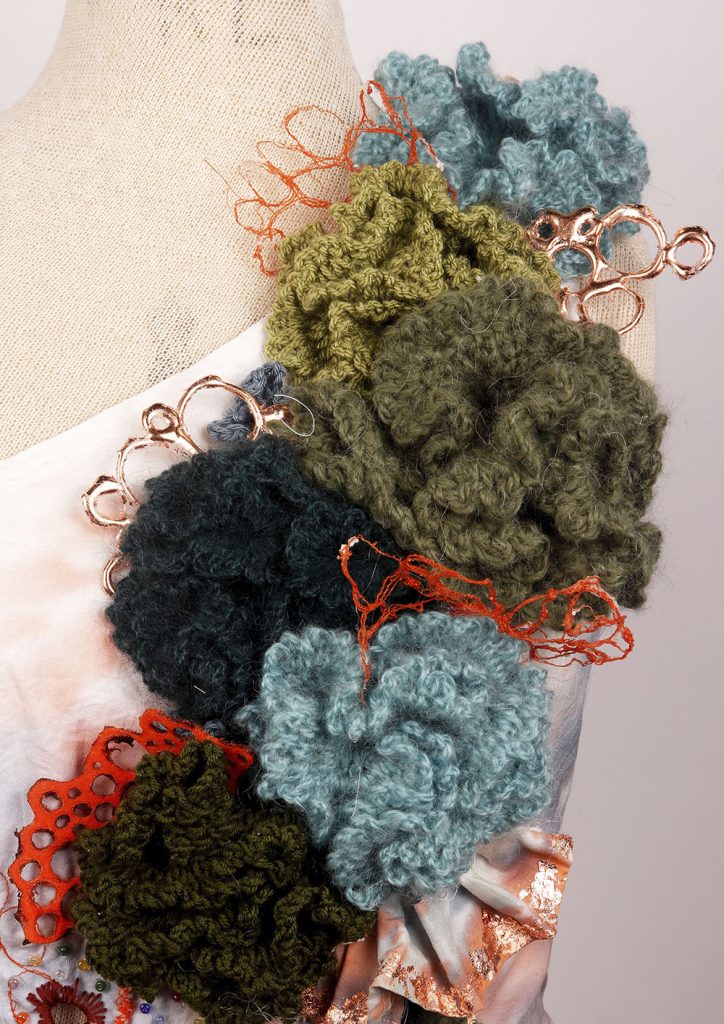
Olivia Hill
This collection of work is my response to the starting point of ‘decay’, where I took my own influence from zombies, mould and skeletons. I decided to take more of a ‘grotesque’ approach to my work, as I found that it allowed me to work closer with finer areas of texture and detail as well as working with quite a natural colour palette (though I did contrast this occasionally by incorporating green – I found this reinforced my influence from zombies.)
Throughout the project I prioritised working with texture-oriented techniques while trying to maintain quite a delicate and fragile type of aesthetic, I found that this worked well with my chosen combination of final techniques – aquafilm, embellishment and heat manipulation. Aquafilm has a delicate appearance and ability to be manipulated and easily layered amongst other things. Fabric manipulation, such as embellishing/tearing fabric worked well in my experimentation as I could work with how much texture and sheerness that I could provide. Using the heat gun on plastics would give a textured and destroyed appearance which I found emphasised my influence from zombies – I even dusted one of these samples with a green pigment.
For my final piece, I chose to make a top garment incorporating these three key techniques. I attempted to make the garment more structured by adding larger plastic samples across the waist of the garment and I layered aquafilm on-top of this. I also chose to add a shoulder strap of just aquafilm for a sheer but textured effect.
In September, I am going to study fashion textiles at The University of The West of England in Bristol.


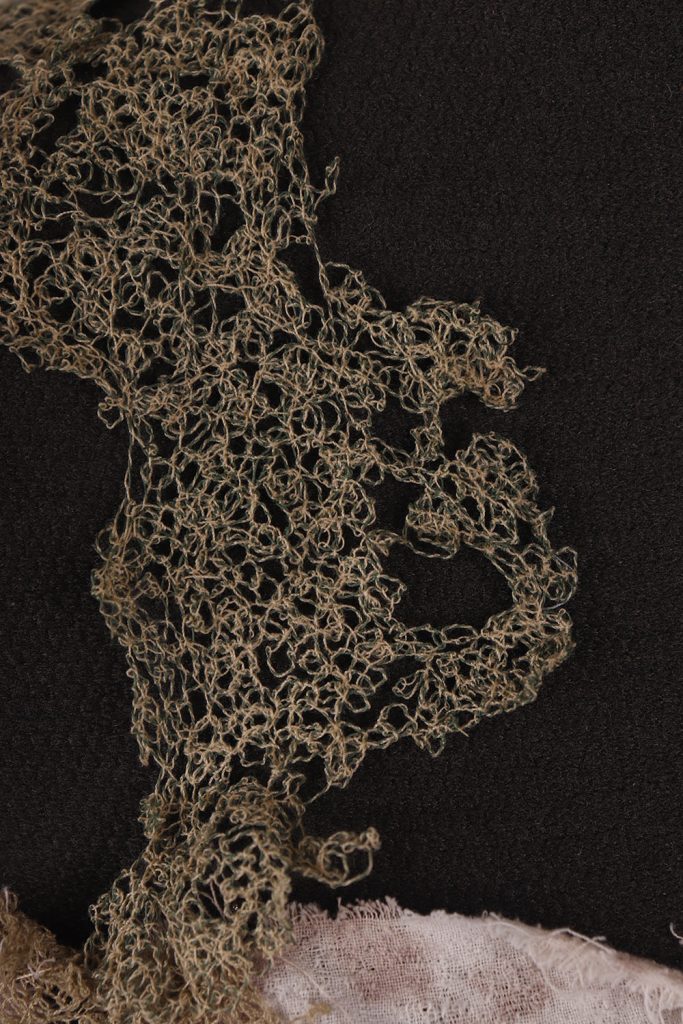



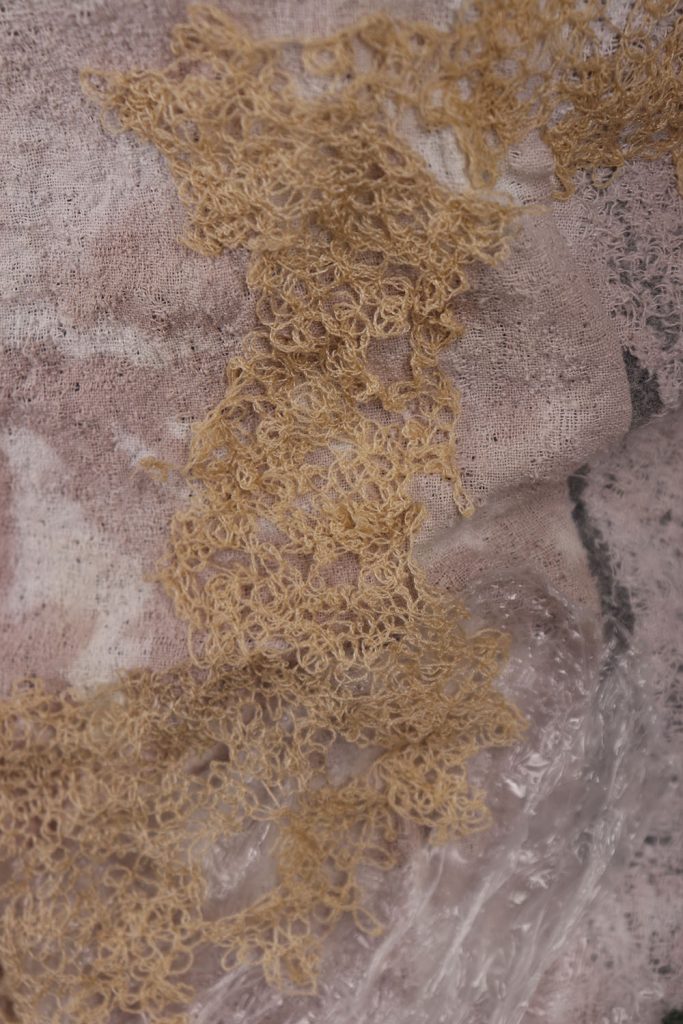
Imamah Laraib
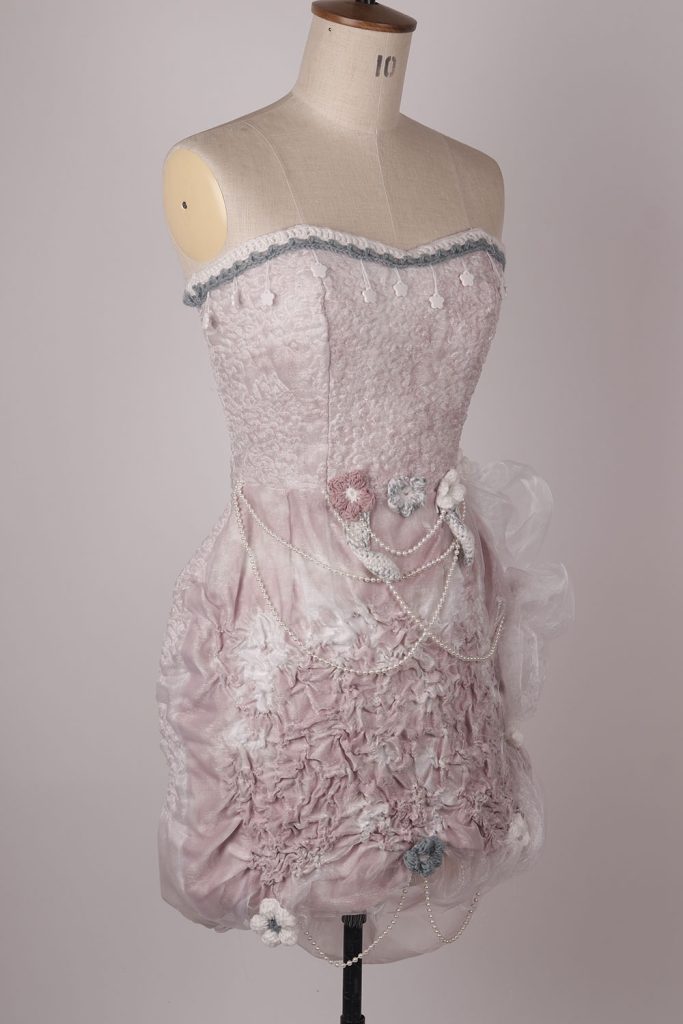

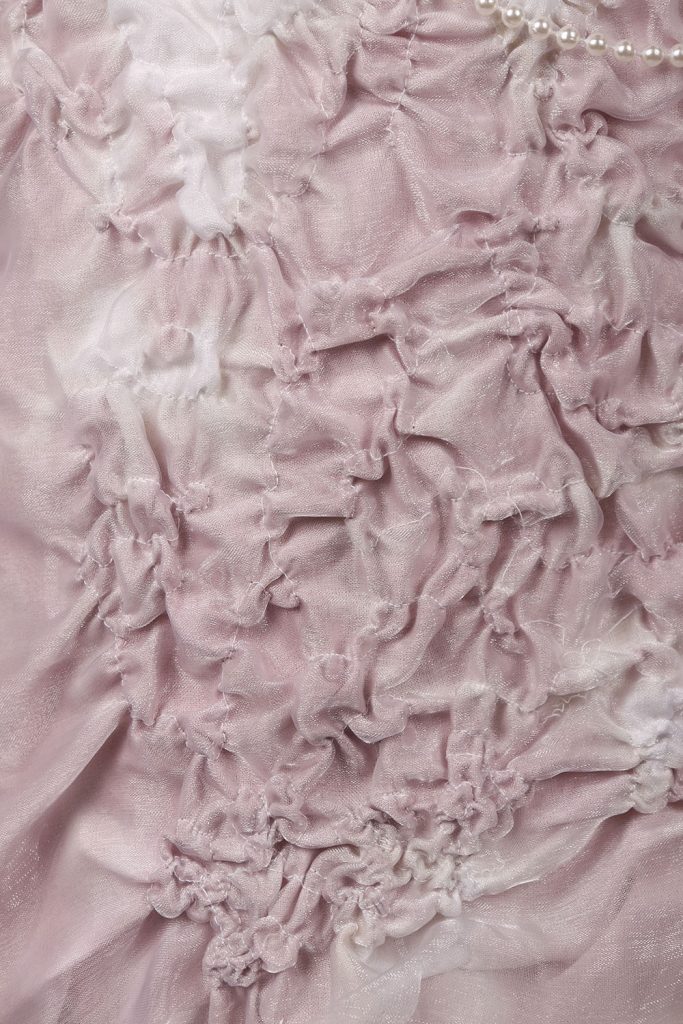
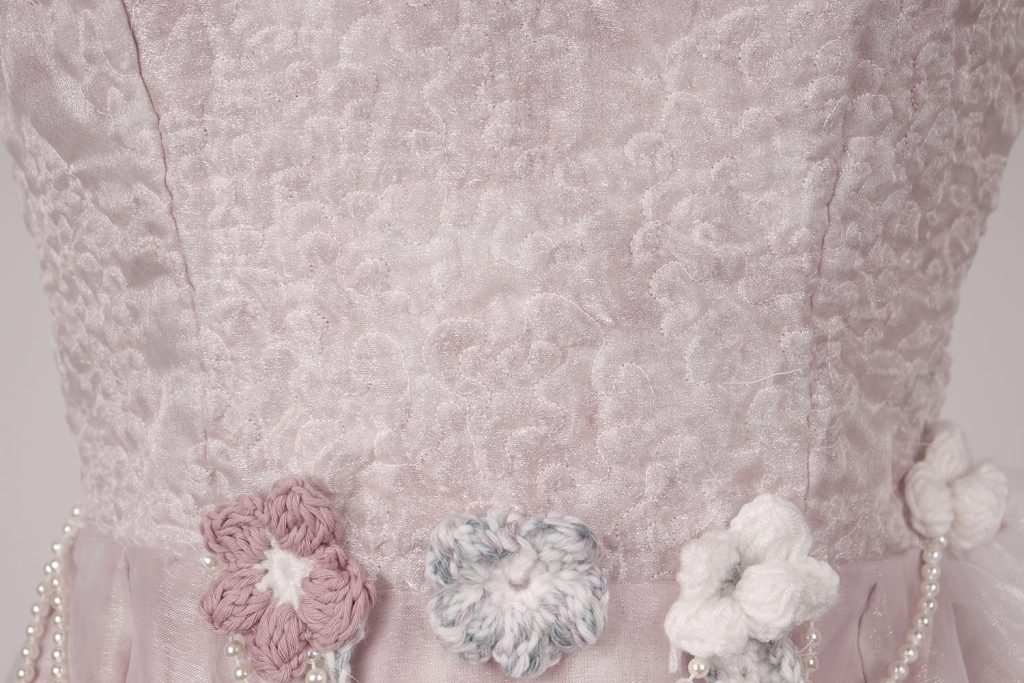
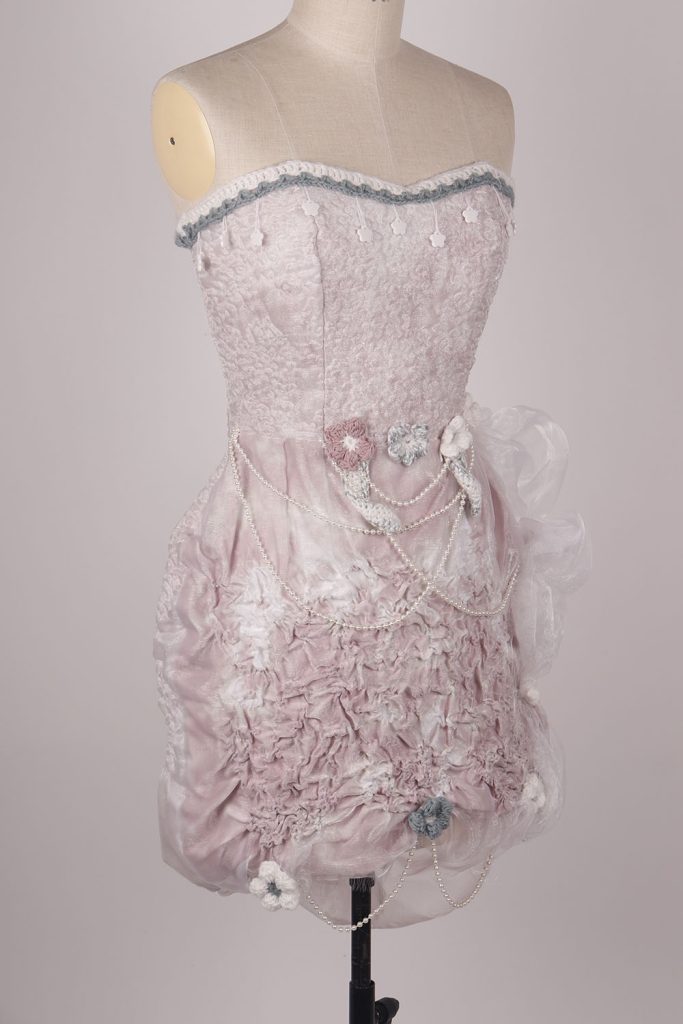


Banita Manak
This project was all about interiors as a starting point, I decided to take the route of the interiors of the body. By closely looking at the anatomy it allowed me to choose the right methods to show the complexities and how intricate these pieces that make up how delicate our bodies actually are. Throughout this project I had experimented with a wide range of techniques and towards the end I had chosen my favourite pieces and combined them together to make this final fashion piece, which is a compilation of the many ideas I had explored in this project.


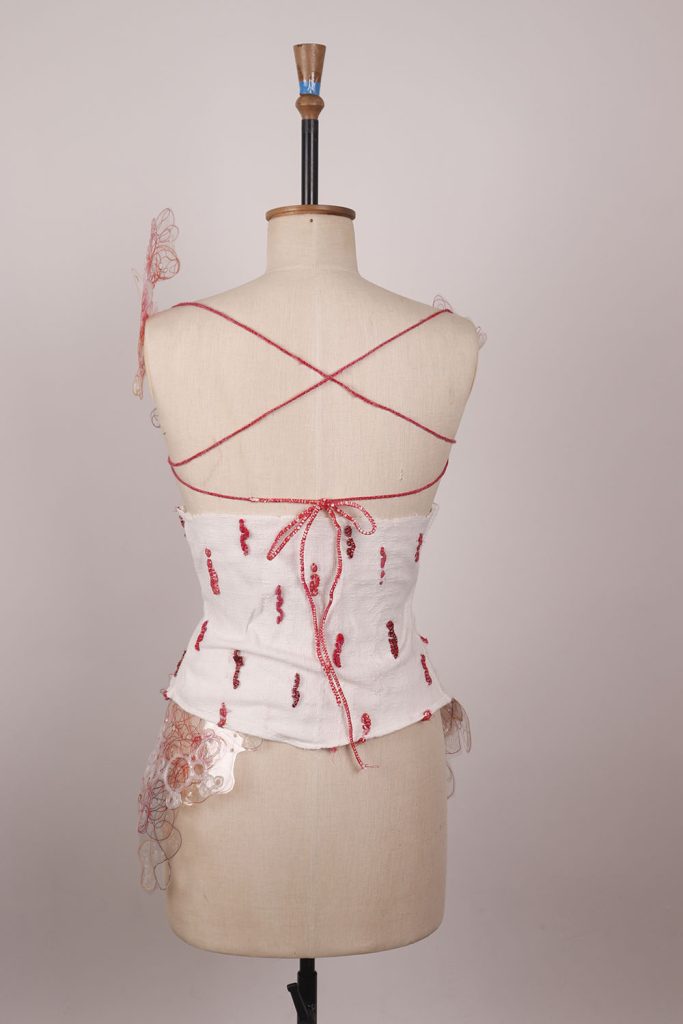






Grace Steele
For this project I chose the theme “Decay” because I found it very inspiring and different from my earlier projects. I had many ideas for this project, but I decided to focus on architectural decay including rust and water damage.
Since I live in a deprived area, finding primary sources was not difficult. There were many buildings that I found interesting because of the decay and lack of upkeep. Although I chose to focus on architecture, for my final piece I created a fashion-based piece which consists of layering of different fabrics to create a distressed look. I think this is interesting because my original inspiration was Giles Deacons Fall 2012 collection which contains fashion pieces inspired by decay and burning. These dresses are interesting because of the colours scheme and the layering involved.
For this piece, I experimented with much more machine embroidery, slash & stitch, and knitting. I found this project to be the most inspiring I have created yet due to the variety of different techniques I was able to experiment with. My final piece was successful in creating the aesthetic I wanted to create so I am overall incredibly happy with the outcome.
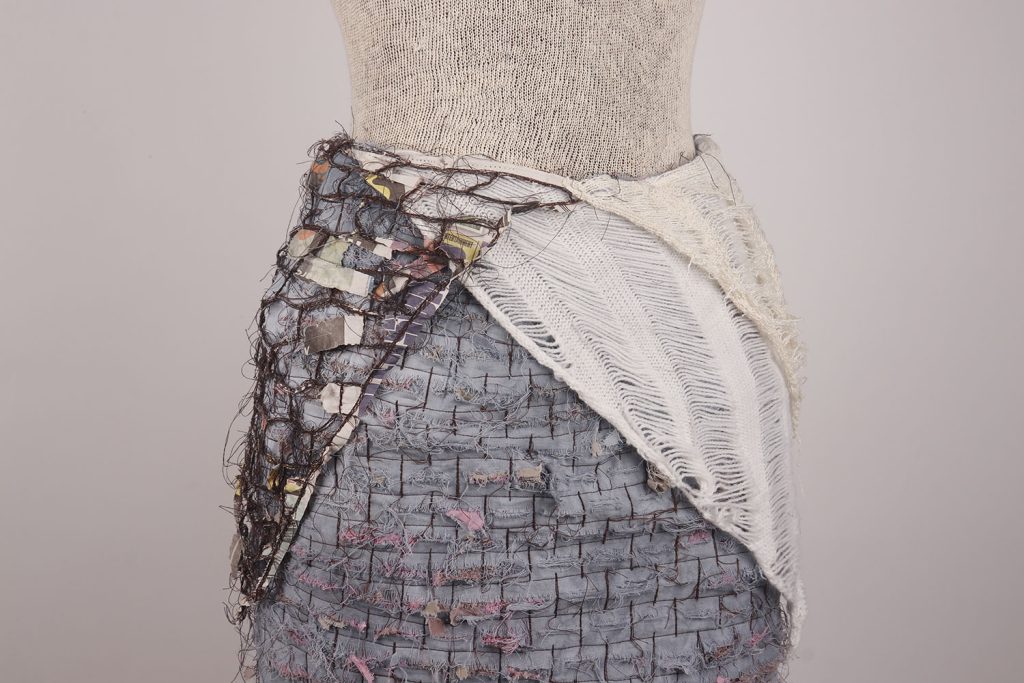

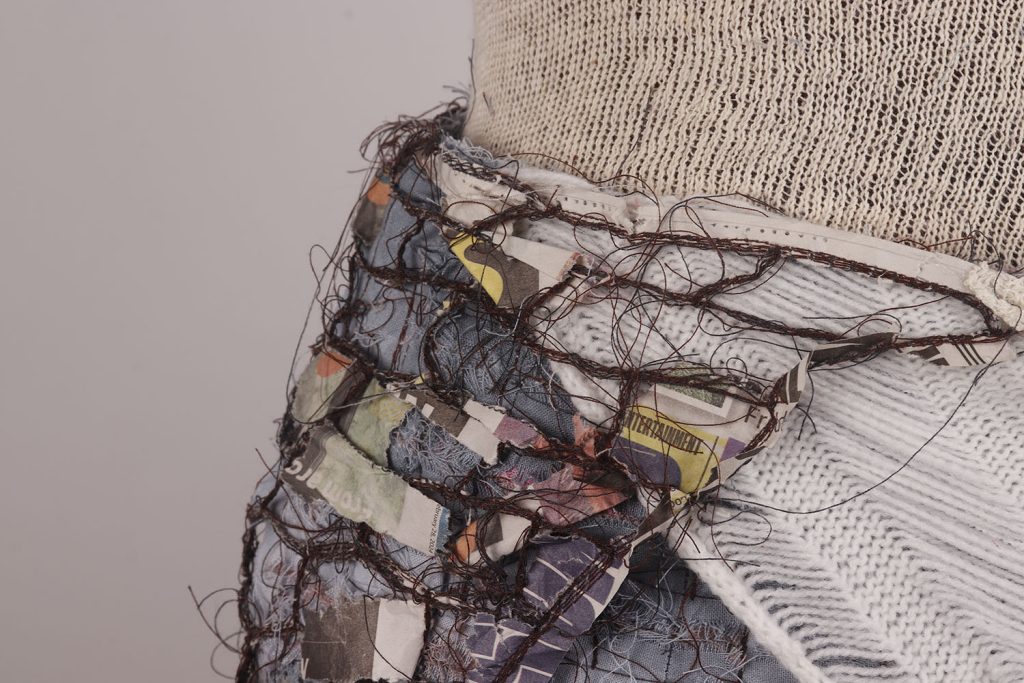



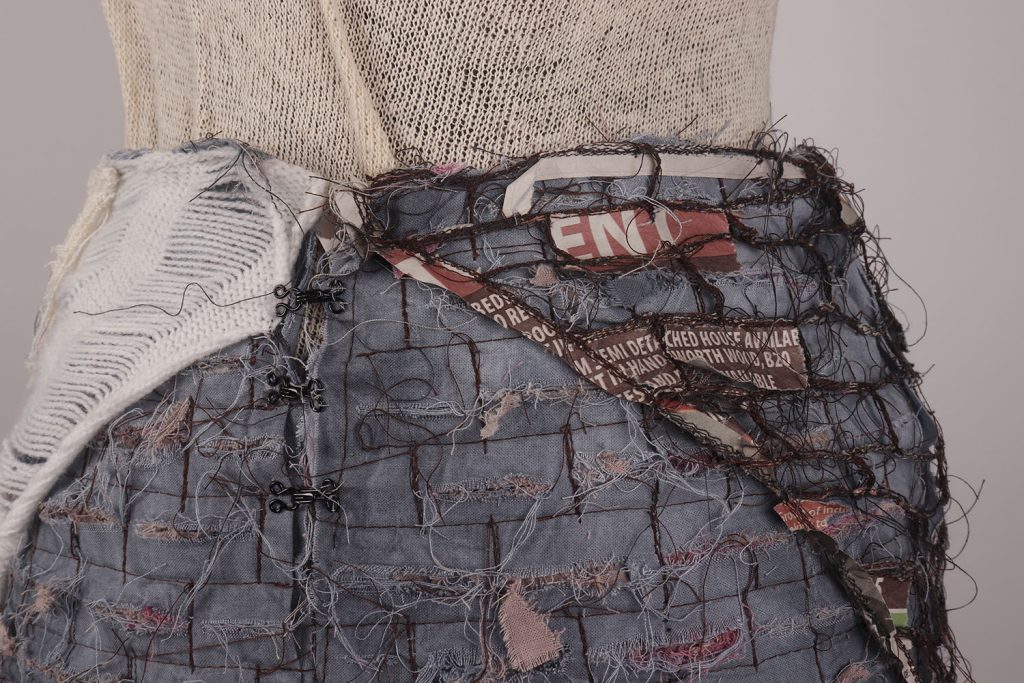



Sarah Tavares
My final piece aims to reflect the decay of our society, but also the ghastly beauty behind it. Each tile is made to look distressed and torn away from the wall, symbolising that we as individuals are pulling away from what used to be the social norms, which can be perceived as a positive or negative movement.
On one hand, we are becoming a generation unlike any seen before, but we’re also pulling away from each other, sectioning off into groups and segregating ourselves from the rest of society. The red and brown threads also represent this pulling apart of society. The brown shows the material world that we are changing by doing so, the buildings destroyed by war, the cities levelled by hatred and the monuments built to commemorate them, but what good is a monument if nobody listens to what it’s trying to say?
The red thread represents the flesh that will always bind us, the unwavering truth that, at the end of the day, we are all human beings, and no amount of hatred and disgust can change that. That is what holds us together. The bold lettering and feminist logo are there to represent those brave enough to speak out through art and the risks they take by doing so, I can only hope to make as much of an impact on the minds of our decaying society as they do.

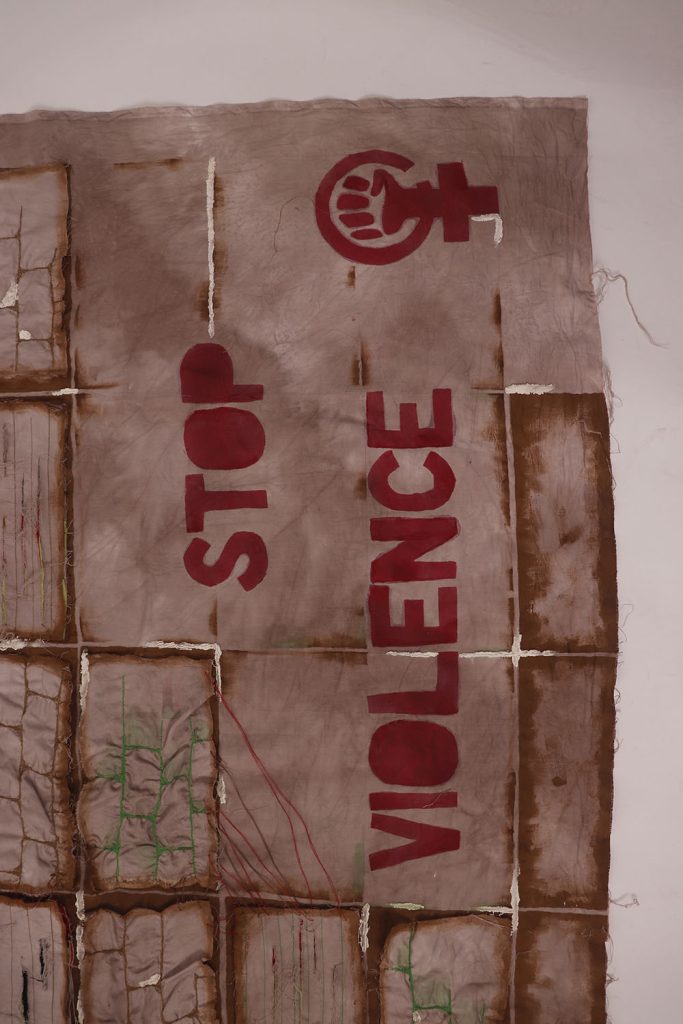
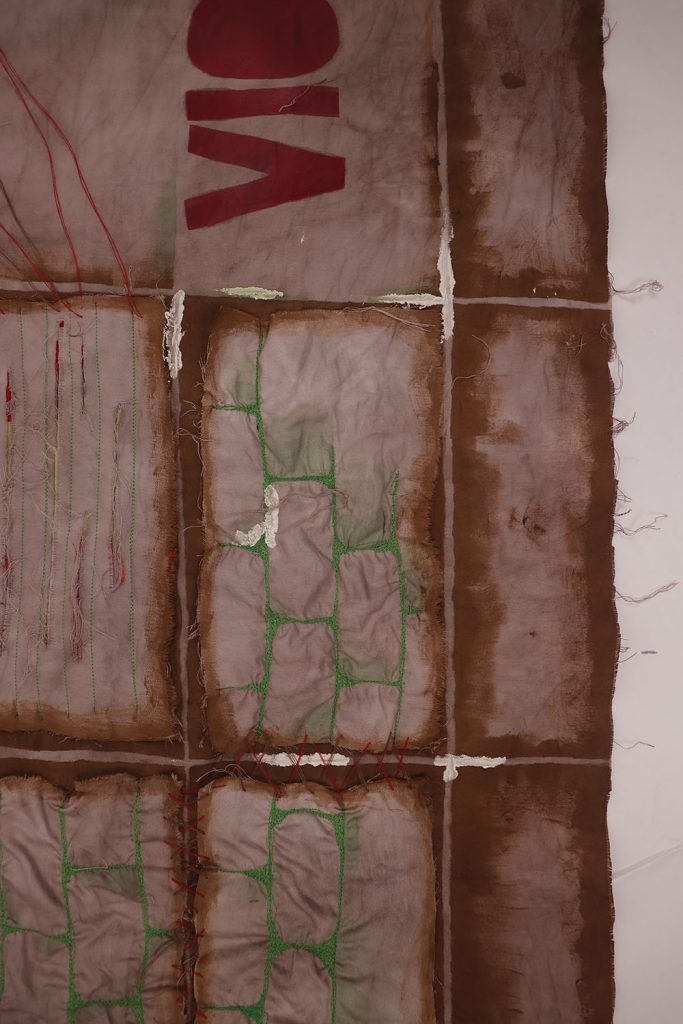
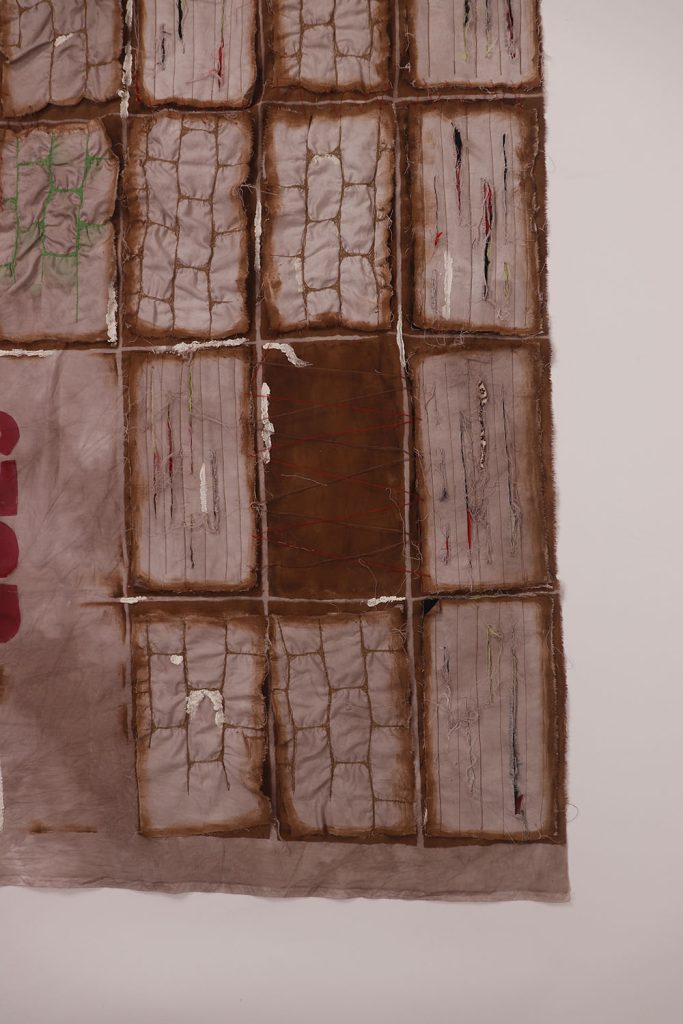
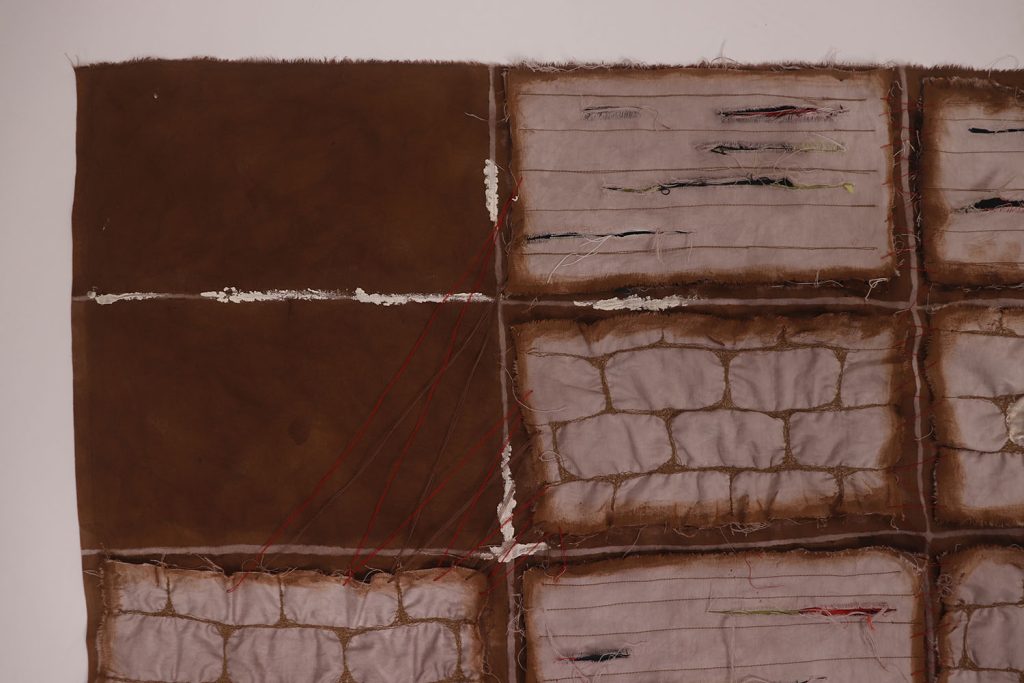
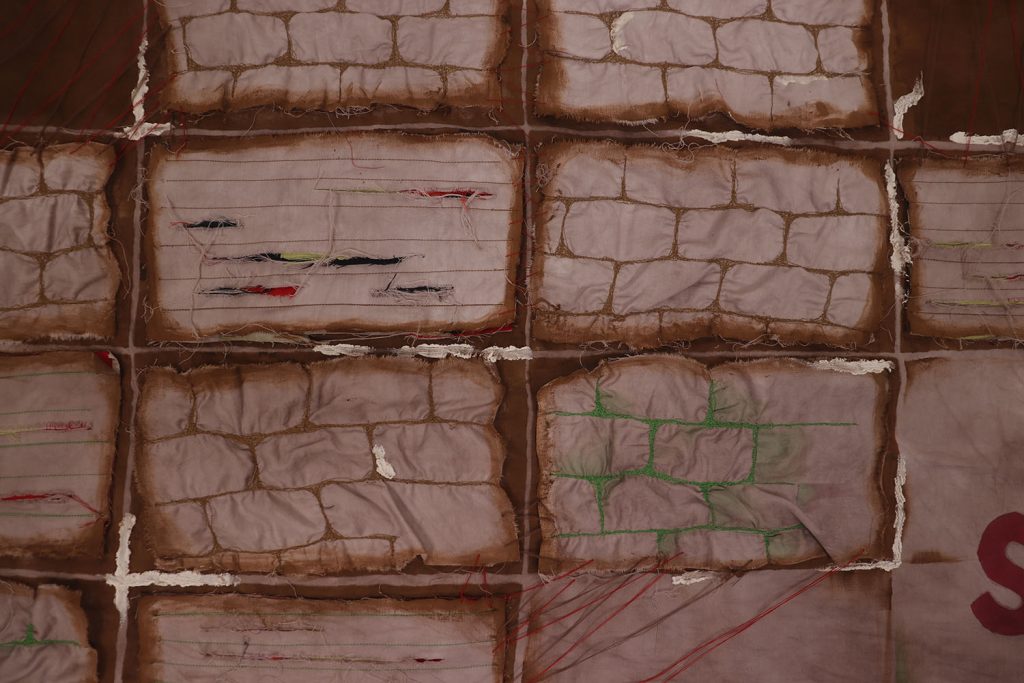
Daisy Williams
I wanted to explore how knitting could be manipulated to create a fashion garment in my piece. I was really inspired by the technique of knitting due to how it can behave with different wools and stitches. I focused heavily on the knitting machine which is an old fashioned and complex technical machine to create my top, which I found extremely interesting due to its various stitch styles.
Furthermore, in this exploration I focused on the use of the fair isle stitch, which originated in Scotland, because of how it allows you to create pieces of knit which are patterned in various colour combinations and styles. I specifically chose one geometric pattern and manipulated the colour and length in my piece, as I wanted to create an asymmetrical design without overwhelming the piece. I found that adding pleats in the knit helped break up the design and also add more dimension to the piece, furthermore, I found adding carefully placed holes and the use of crochet on the lower torso of the top added more texture.
Overall, I really enjoyed creating this piece as it was all decided by myself on where the segments joined together, how big they were and how each knitted part would have subtle differences compared to the next. Furthermore, I found that the colours and style were all cohesive. However if I was to add more I would include the crocheted pieces all around the bottom of the design, although I do think they are successful on their own.
